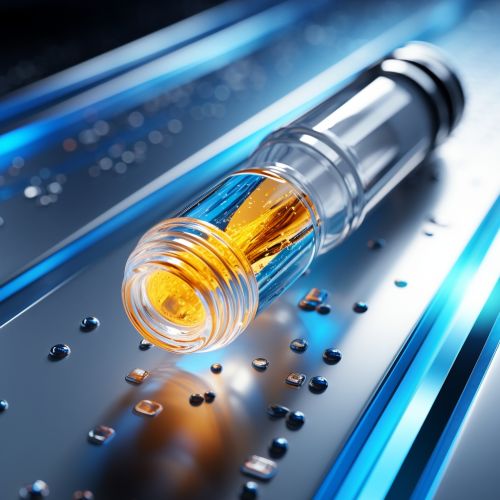Fluorodeoxyglucose
Introduction
Fluorodeoxyglucose (FDG) is a radiopharmaceutical used in the medical imaging modality known as Positron Emission Tomography (PET) scans. It is a glucose analog that is labeled with the radioactive isotope fluorine-18. This compound plays a crucial role in the detection and monitoring of various types of cancers, neurological disorders, and cardiovascular diseases.


Chemistry
Fluorodeoxyglucose is a glucose analog where the hydroxyl group at the 2' position is replaced by a radioactive fluorine atom. The fluorine-18 isotope is produced in a cyclotron by proton irradiation of oxygen-18 enriched water, followed by a series of chemical reactions that result in the final FDG product.
Mechanism of Action
The mechanism of action of FDG is based on the principle of increased glucose metabolism in certain types of cells. In normal cells, glucose is taken up, phosphorylated by the enzyme hexokinase, and then undergoes further metabolism. In contrast, FDG is taken up by the cell, phosphorylated by hexokinase, but then becomes trapped in the cell because the next enzyme in the pathway, glucose-6-phosphatase, does not recognize FDG as a substrate. This trapping mechanism is what allows for the imaging of FDG distribution within the body.
Medical Applications
Oncology
FDG-PET scans are widely used in the field of oncology. Many types of cancer cells have increased glucose metabolism compared to normal cells, a phenomenon known as the Warburg effect. This increased uptake and trapping of FDG allows for the imaging of tumors and metastases in the body.
Neurology
In neurology, FDG-PET scans are used to study brain metabolism and to aid in the diagnosis of conditions such as Alzheimer's disease, epilepsy, and Parkinson's disease.
Cardiology
In cardiology, FDG-PET scans are used to assess myocardial viability. Areas of the heart that have decreased or absent FDG uptake are indicative of non-viable myocardium, while areas with preserved FDG uptake are indicative of viable myocardium.
Safety and Side Effects
FDG is generally well-tolerated, with few side effects. The most common side effect is a slight increase in blood sugar levels, which is usually transient and does not require treatment. The radiation exposure from an FDG-PET scan is comparable to that from other radiological imaging procedures.
Production and Availability
FDG is produced in cyclotrons and must be used within a short time frame due to the short half-life of fluorine-18. This necessitates the presence of a cyclotron facility within a reasonable distance of the imaging center.
